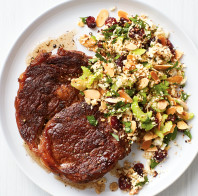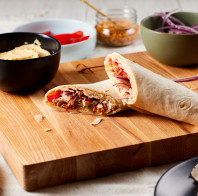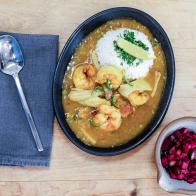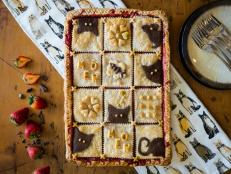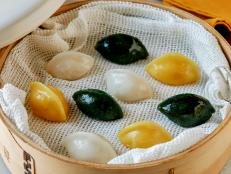Odeng Bokkeum Is the Simple, Comforting Banchan I Can Whip Up with Zero Preparation
It’s my quick fix to taste home away from home.

Teri Lyn Fisher
Going back home always means homemade banchan, and a never-ending bounty of it. Whenever my grandma learns I’ll be in town, she prepares every manner of pickled, marinated, spicy-sweet vegetable side dish, with some of the greens even homegrown in our backyard. Pulling out container after container of banchan to accompany dinner is a ritual that never gets old (my family has an entire drawer of plastic and glass containers dedicated to this use). There’s no meal that hits the spot quite like a bowl of fresh rice topped with tangles of savory namul and a runny egg — it’s simple culinary perfection.
When I’m back in New York, it’s much harder to get my daily banchan fix — not because it’s impossible to procure, but mostly because the logistics around preparing it feel just annoying enough. Many of these dishes call for ingredients I can only find at a Korean grocery store, requiring a separate trip I don’t always have the energy or motivation for; and the shelf life of produce means there’s a deadline to using it up (not a huge deal, but an inconvenience nonetheless when unexpected plans come up and my vegetables start to go bad in the fridge).
I’ve quickly realized, though, that there’s only so many days of meal-prepped pasta I can eat. When I’m overcome with a sudden craving for something savory and punchy in that uniquely Korean way, but don’t want to leave the apartment or cook up a storm, the comforting, reliable solution I’ve found is odeng bokkeum: stir-fried fish cakes with vegetables.
Odeng (or eomuk) bokkeum is a classic banchan dish that I’ve regularly seen on restaurant tables, but the savory-sweet fish cake strips are a cinch to make without any prior prep or last-minute ingredient hunting. Fish cake sheets are cut into rectangular strips and sauteed with sliced vegetables, soy sauce and Korean cooking syrup, resulting in a lovely balance of salty with an edge of sweetness. Basic produce like onions, carrots and scallions are easy enough to keep on hand, and odeng sheets can be stored in the freezer and quickly thawed in under a minute, meaning I can indulge my craving for Korean on a whim — even when I’m feeling my laziest. And because the finished dish keeps for up to five days (and reheats well), there’s plenty of time to enjoy it with rice, farro or whatever grain I’ve cooked for the week.
Though I’d love to have a fridge perpetually stocked with banchan like I do when I’m back home, odeng bokkeum reminds me that the comfort I crave is (quite literally) within arm’s reach at all times. This simple side is an easy, satisfying way to maintain connection to Korean cuisine on my own terms, something I can throw together in no time that serves as a tangible taste of home. I’d even venture to say it would make my grandma, the banchan queen, proud — which is the only stamp of approval I really need.
Related Content:



















